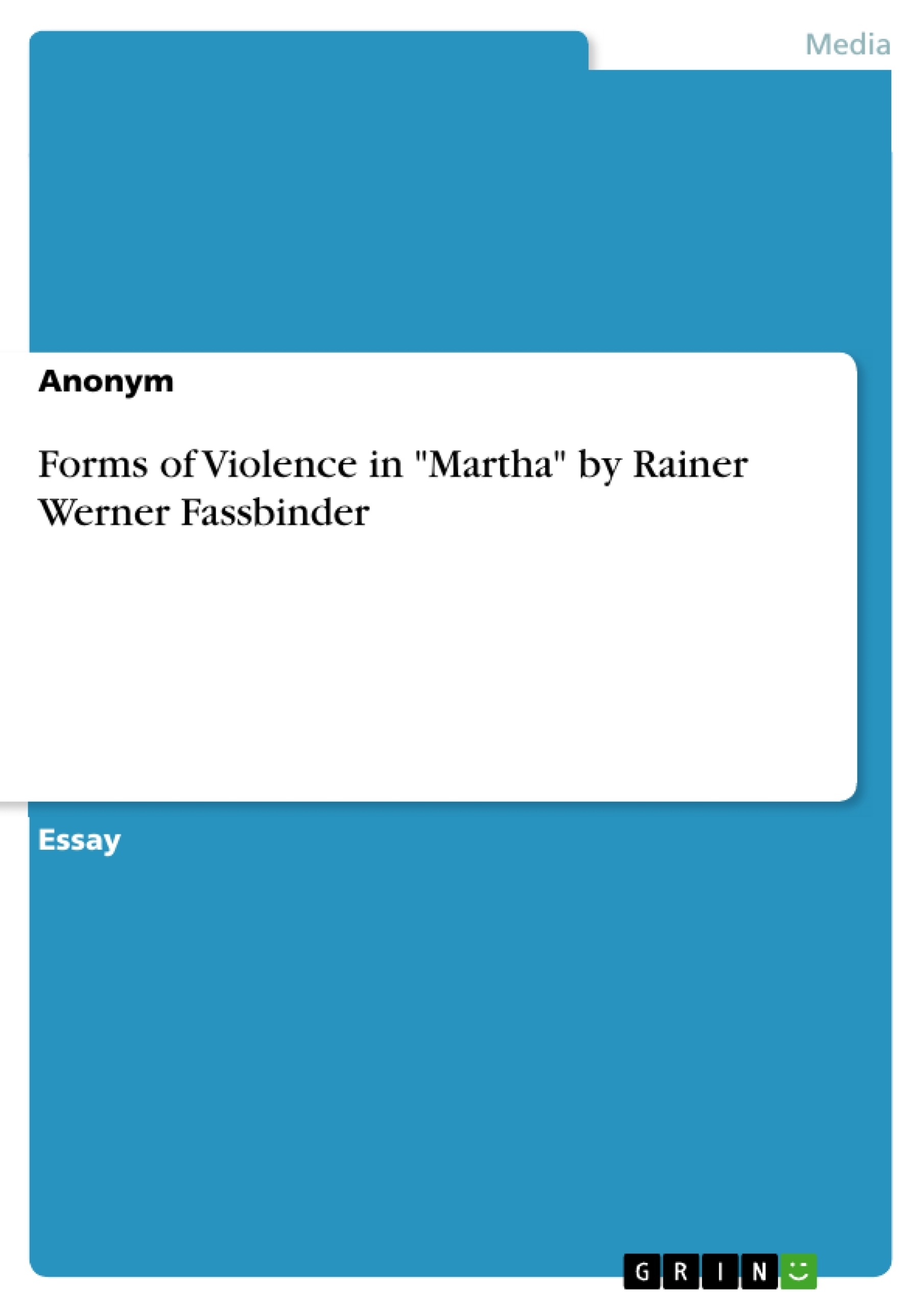In this essay I am going to analyse Fassbinder’s film “Martha“ and how different forms of violence are displayed, focusing mainly on one specific scene. To do so, I will shortly explain the term “violence” and differentiate it into its various forms. Keeping those definitions in mind, I am going to analyse a key scene with focus on the used cinematic techniques as well as the overall plot.
Inhaltsverzeichnis (Table of Contents)
- Violence and ‘Gewalt' in Rainer Werner Fassbinder's “Martha”
- Analysis of a Selected Scene
- From “Katzelmacher“ to “Effi Briest“ or “Berlin Alexanderplatz”
- Different Forms of Violence
- “Violence”
- Direct Violence
- Structural Violence
- Cultural Violence
- Applying these Theories to Fassbinder's 1973 Released Film “Martha”
- The Selected Scene
- Martha's Identity
- Penetration
- Symbolic Violence
- Mirrors and Reification
- The Private Sphere
- The House and its Depiction
- Conclusion
Zielsetzung und Themenschwerpunkte (Objectives and Key Themes)
This essay aims to analyze Rainer Werner Fassbinder's film “Martha” by examining how different forms of violence are displayed within the marriage between Martha and Helmut. The analysis focuses on a specific scene, utilizing cinematic techniques and plot elements to illustrate the complex dynamics of power and control within the relationship.
- The various forms of violence, including direct, structural, and cultural violence
- The portrayal of a bourgeois marriage with patriarchal dominance
- The violation of Martha's identity and her subordination to Helmut's will
- The confinement of Martha within the private sphere and her exclusion from the public sphere
- The role of cinematic techniques and mise-en-scène in conveying these themes
Zusammenfassung der Kapitel (Chapter Summaries)
- The essay begins by defining the term “violence” and differentiating it into its various forms, namely direct, structural, and cultural violence. It then introduces the context of Fassbinder's film “Martha” as a continuation of his earlier work “Effi Briest”, emphasizing the themes of patriarchal dominance and the consequences of a restrictive bourgeois marriage.
- The analysis then focuses on a specific scene in which Helmut, as a dominant figure, attempts to educate Martha according to his own will. This scene illustrates how Martha is manipulated and subjected to psychological control, highlighting the role of cinematic techniques like close-ups, camera movements, and mise-en-scène in conveying these themes.
- The essay explores how Helmut's control over Martha's education not only restricts her but also violates her need for identity. It discusses the concept of “penetration” as a form of structural violence where the dominant figure imposes their will on the submissive party.
- The essay then examines how Martha's position within the marriage is further defined by “symbolic violence”, where she is viewed as an object serving the male-dominated social order. The film's use of mirrors and mise-en-scène emphasizes Martha's confinement to the private sphere and her subservient role.
- The essay concludes by emphasizing the entrapment of Martha within the private sphere due to the restrictive gender roles of the 1950s to 1970s. It highlights how Helmut's control over Martha's life, from her job to her communication, contributes to her misery and reinforces the dominant-submissive dynamic.
Schlüsselwörter (Keywords)
The primary keywords and focus topics of this essay are: violence, cultural violence, structural violence, patriarchal dominance, bourgeois marriage, identity, symbolic violence, private sphere, gender roles, mise-en-scène, cinematic techniques, Rainer Werner Fassbinder, “Martha”.
- Arbeit zitieren
- Anonym (Autor:in), 2020, Forms of Violence in "Martha" by Rainer Werner Fassbinder, München, GRIN Verlag, https://www.grin.com/document/1149675




